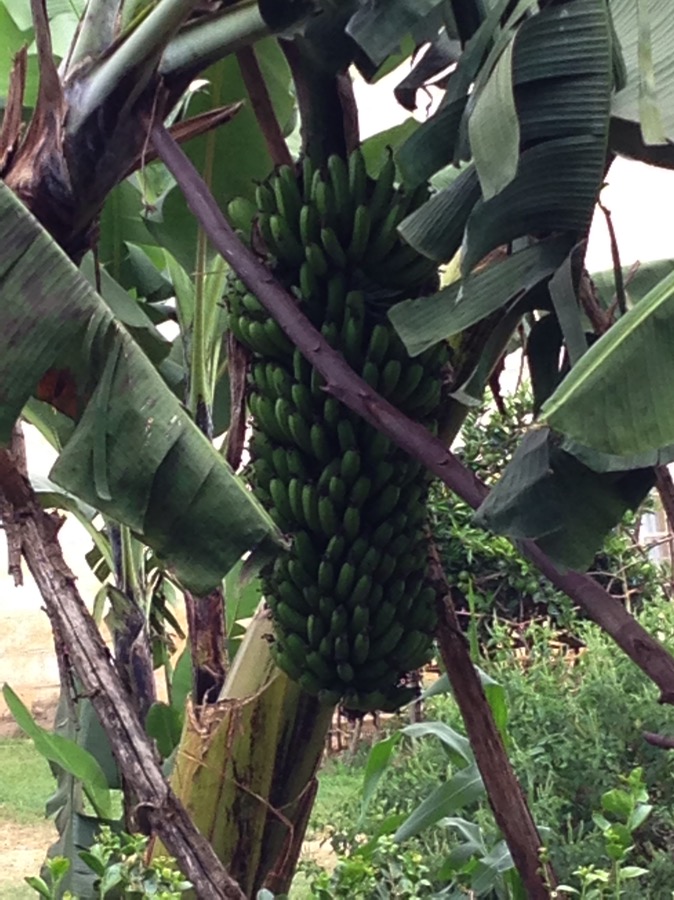How’s Africa? – Bananas!

A few years ago, my dear friend, Rachel, came to visit us here in Uganda. She spent a few weeks in Kenya first. The people she was with in Kenya warned her, “Uganda is banana country. You’ll eat so many bananas while you’re there!”
I’m not sure we fed her any bananas at all while she was here visiting, which is ironic because Uganda actually is known for their bananas.
Isingiro, the district immediately to our south, grows many of the bananas that are eaten throughout the country. Kabingo has even put up a statue commemorating this fact (pictured in the above photo). Whenever we drive to the refugee camp, piles of matoke stalks line the side of the road in readiness for the huge trucks that come to pick them up and bring them into the cities, particularly Kampala. Men push bikes laden with bananas along the side of the road. I’ve seen as many as 10 banana stalks on a bike at a time – or around 500 pounds of bananas.
We were told that there are 40 different varieties of bananas. I only know of 4 personally, and we have all of these growing in our yard. We have our own mini plantation in our yard with 20 banana plants. Each plant puts off 3-4 shoots at a time but usually only one of these is producing a stalk of bananas.

Note the banana plant at the far left of the above picture. This is a red banana plant. Even the plant itself is red. They produce bananas with a red skin that are huge and sweeter than any of the other bananas. They are used by some to make beer and wine, though I’ve never been able to figure out how you’d do that with a banana. That said, there are vendors selling banana wine at every trade show.
Next in line is a sweet banana plant, called a kabalagala. The bananas they produce are smaller “snack pack” sized bananas, about half the size of the ones you buy in stores in the US. They are our personal favorites so most of the plants in our yard are kabalagala plants.
Next is the matoke (ebitookye here in Mbarara) or cooking banana. They are the most common variety here. Farmers cut and sell the stalks while they are still jade green and they are peeled and eaten soon after. They taste sort of like potatoes, but that really isn’t even close to the flavor. Even the plantains you get in the States don’t taste the same. We love the flavor and enjoy them every time we get the chance!
Another variety (not pictured above) is bogoya. These look and taste the most like American bananas of any of the varieties we’ve tried.
How can you tell the difference between the sweet bananas and the cooking bananas, you might ask? Note the plant (you might call it a tree or a trunk, but it is really a plant) in the picture above. The sweet banana has a green plant. The cooking banana (or matoke) has a black plant.
Now, I leave you with a picture of the biggest stalk of matoke I’ve ever seen. The entire thing was almost as tall as me and it probably weighed as much as I do. It had at least five poles propping it up when usually one is sufficient.

And that, dear reader, is a quick introduction to the bananas of Uganda.

Thank you, dear writer, for another very educational look at Uganda!
I love sharing about it.